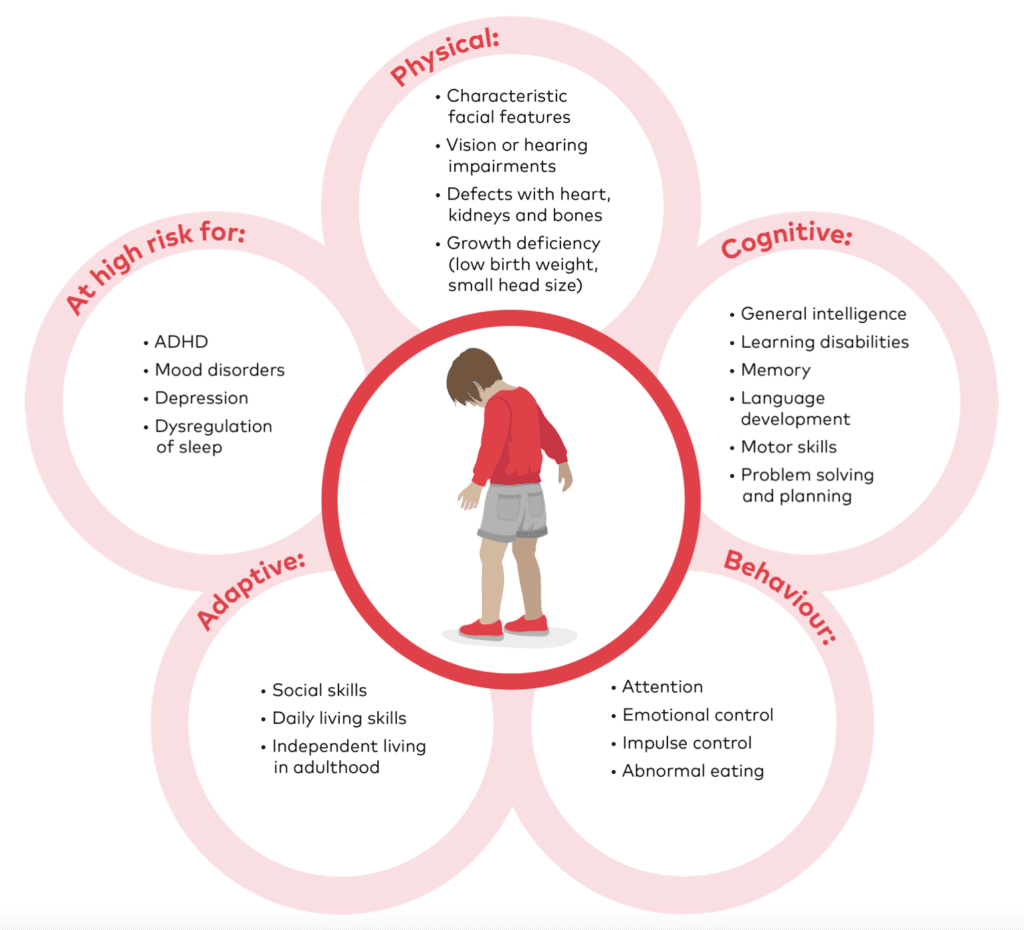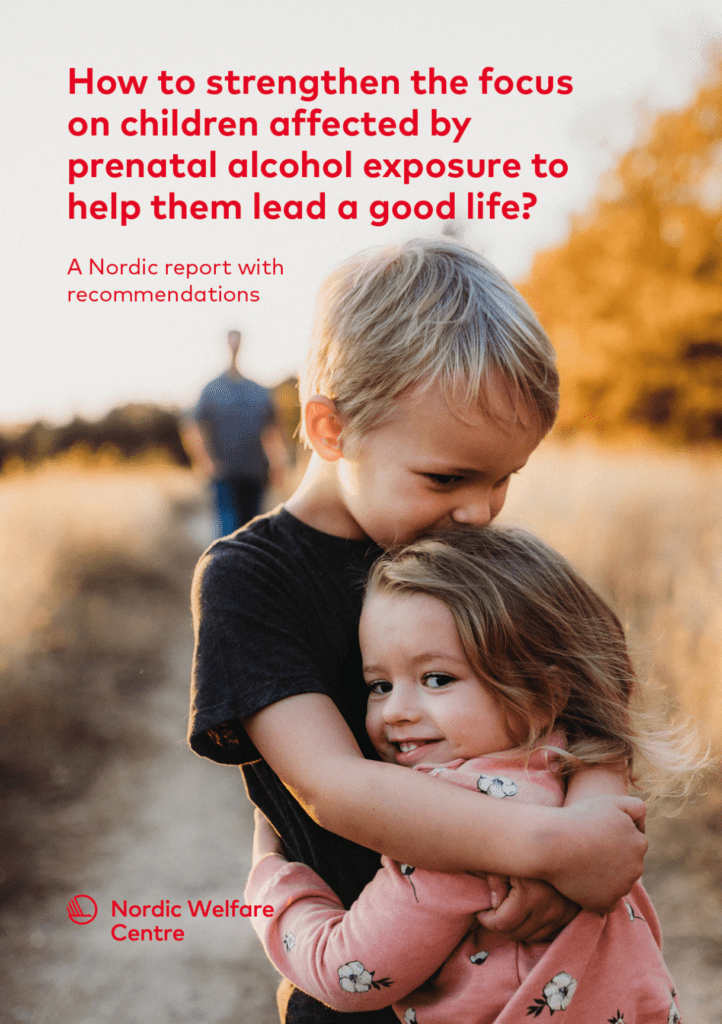The Nordic Welfare Centre has released a new report on how to better help children affected by prenatal alcohol exposure. This report gives Nordic countries recommendations in order to give children and their families affected by prenatal alcohol exposure the best possible foundation for a healthy life.
The term “fetal alcohol spectrum disorder” (FASD) refers to a wide range of consequences brought on by prenatal alcohol exposure. It is non-diagnostic. Fetal alcohol syndrome (FAS), alcohol-related birth defects (ARBD), and alcohol-related neurodevelopmental disorder (ARND) are all clinical diagnoses under the umbrella of FASD. A verified history of alcohol exposure during pregnancy is needed to diagnose ARBD or ARND.
Currently, health authorities of the Nordic countries recommend women who are pregnant or planning to get pregnant to completely avoid alcohol.
Despite this, some women albeit a small proportion in the Nordic countries still think it is either okay to have a glass of wine or beer while pregnant or don’t know if it is okay or not.
According to an IQ-initiative survey, 4 to 9% of women in Nordic countries think its fine to have alcohol while pregnant and 14 to 27% do not know if it is okay or not.
There is a need for more information regarding prenatal alcohol dependence and its effects (FASD) in the medical field and among healthcare professionals. Health practitioners are better equipped to recognize pregnant women who use alcohol and children who may be at risk of FASD if they have the necessary knowledge and abilities.
This report further emphasizes the necessity and significance of providing individualized care and ongoing follow-up for affected children and their families because prenatal alcohol exposure has long-lasting effects. The proposals could benefit not only the target group’s health but also society and the economy as a whole.
FASD is usually called a hidden disability since not all children with FASD show the outer physical signs of the disability. But they still suffer from brain impairments.
FASD symptoms, and prevalence in Nordic countries
FASD symptoms fall on a wide spectrum since many factors including the frequency and quantity of alcohol consumed during pregnancy and the developmental timing in which alcohol exposure occurs can change the prognosis.
Symptoms can be milder with milder behavioral regulation impairments or severe with impairments in a range of developmental areas such as learning, memory, behavior, or social interactions, or individuals with intellectual disabilities.

The lack of universal diagnostic guidelines makes it difficult to exactly say how many people are affected by FASD in the population.
Nordic countries use different diagnostic guidelines but commonly apply the International Classification of Diseases (ICD) maintained by World Health Organization. However, the ICD only includes criteria for FAS.
One systematic review and meta-analysis by Lange and colleagues in 2017 estimated the prevalence for FASD per 10,000 population to vary from 70/10,000 in Iceland to 360/10,000 in Denmark.
These estimates, despite their limitations, are probably underestimations since most people with FASD are either undiagnosed or misdiagnosed. One study by Chasnoff and colleagues found among adopted youth and youth in foster care, nearly 87% of the youth meeting the criteria for FASD were never previously diagnosed or were misdiagnosed.
Current prevalence estimates of FASD in Nordic countries are far higher than the prevalence of another known developmental disorder Downs Syndrome.
The cost of FASD in Nordic countries
The direct costs of FASD include healthcare, child welfare services, social services, special education, and law enforcement. The indirect costs can range from productivity losses due to increased morbidity and productivity losses of caregivers of children with FASD.
There is a lack of estimates about exactly how much FASD costs.
- One study estimated that with the prevalence of 0.2% FAS in Sweden the cost is about €1.6 billion for FAS.
- A review analyzing studies from Canada, the United States, Sweden, and New Zealand found that the annual FASD-related costs would be approximately US$ 23,000 per child and US$ 24,000 per adult.
- Under the current prevalence estimates direct and indirect costs of FASD could be millions of euros every year. This exceeds the cost of for example autism.
FASD is preventable
While there is no cure for FASD, it is preventable. Early and continuous efforts can prevent and reduce pregnancies with the risk of prenatal alcohol use and reduce the associated costs significantly.
For those who already have the disorder, early identification, diagnosis, continuous services, and support for individuals with FASD and their families, can improve the lives of those who are affected and prevent adverse long-term consequences.
Recommendations by the Nordic Welfare Centre
The Nordic Welfare Centre makes two main recommendation in the new report.
Recommendation 1: Training of healthcare professionals on FASD
- Include FASD in the curricula of healthcare professionals’ education and provide continuous training on FASD.
- Provide training for healthcare professionals on guidelines for assessment and diagnosis of conditions within the FASD spectrum and exclude other diagnoses.
- Provide training for healthcare professionals on ethical issues such as how to discuss the diagnosis within the FASD spectrum in a supportive and natural way to reduce stigma. This is especially important when biological parents are involved.
- Provide training for healthcare professionals on how to manage conditions within the FASD spectrum and co-morbidities (including making treatment plans or intervention recommendations).
Recommendation 2: Support and services for individuals with FASD
- Provide a child- and family-centred health and social care system that offers multidisciplinary and cross-sectorial support and services for individuals with FASD and their families.
- Provide an intervention or treatment plan for individuals with FASD and their families based on their individual needs. The individualised support should also take into consideration the caregiving environment.
- Provide parental training to help parents better understand their child’s areas of challenges and respond to their child’s needs to improve everyday life.
- Provide long-term follow-up. The need for support and services can continue into adulthood for many children and adolescents with FASD.
This report highlights the need to:
- raise awareness of alcohol use during pregnancy and of FASD,
- prioritize screening and the diagnosing of FASD, and
- the prevention of FASD in societies.
Professionals in healthcare and medical fields are identified as key to these actions. Early diagnosis is important to ensure those who have FASD get the support they need to live a full life.
Society will also greatly benefit from appropriate interventions and improvements in FASD-related work such as by reducing the associated costs, obtaining better prevalence rates, improving research on FASD, and increasing the allocation of resources for FASD.
It is important to prioritize action on alcohol use during pregnancy and its consequences for the child in particular. This innocent and vulnerable group in the population is in harm’s way due to other people’s alcohol use. They must be seen, identified, and diagnosed if needed to receive the support and services they need to achieve their full potential.

